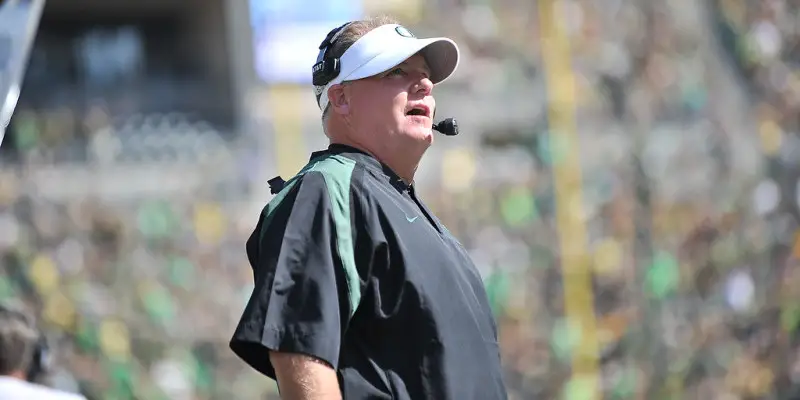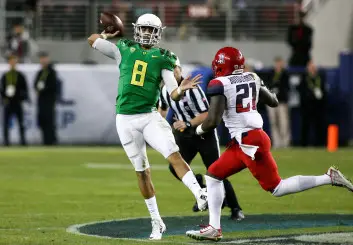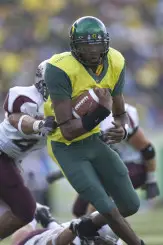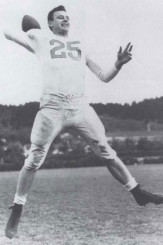At Oregon, we have grown accustomed to outsiders disrespecting our players by calling them “soft.” Even Marcus Mariota was not safe from such descriptions, as critics in the national media called him a mere by-product of a successful system.
Many Duck fans believe the labels of “soft” and “by-product” of the system started with Dennis Dixon and when the spread offense was first introduced to Oregon in 2006. However, that is not the case, the label goes back more than nine years — all the way back to 1947 with Norm Van Brocklin, a.k.a “Dutchman,” and much like Mariota, he went from obscurity to a star player at Oregon.
Van Brocklin was a 6th string half-back with no shot of playing, but moved up the depth chart with the introduction of coach Jim Aiken.
Keep in mind, offenses back then were much different from the high-octane spread offense that we have come to enjoy at Oregon. They were methodical, slow, and outright boring. Offensive players huddled between every play, ran down the play clock, and always punted on fourth-down.
It was a time of basic formations and running between the tackles; throwing the ball was almost taboo. Much like the SEC of today, there were tough defenses against weak offenses.
Due to limited passing schemes back then, offenses were heavily run-based and so there were essentially nine blockers for the half-backs. Therefore, success was achieved by recruiting the strongest and fastest athletes. Now, unlike many other powerhouse schools of today, Oregon is not known for attaining the best talent on the market — so you can imagine the crop of recruits they were working with back then.
With the implementation of the T-formation, the field was spread-out — which created more passing options to maximize Van Brocklin’s skill set. This reminds me of Mariota and Chip Kelly – where an unknown player and an innovative coach united to create a new offense that was based around the player’s talents.
Like other visionaries, Jim Aiken was ahead of his time. He saw an unknown half-back easily throw the ball 50 yards and decided to give him the opportunity to be a quarterback. To put this shift into perspective, the current record for pass attempts in a season is 714 by Connor Halliday in the Pac-12. For Van Brocklin’s first season at quarterback, he went second all-time in pass attempts with 168.
The system was a match-made-in-heaven for Van Brocklin, as Oregon tied for first place with Cal in the Pacific Coast Conference and missed out on the Rose Bowl due to controversial school voting at Washington, where Cal was elected to move on — but that’s an argument for another time.
The success with the new system led Van Brocklin to enter the 1949 NFL Draft even though many critics questioned how well his game would transition to the NFL. Even though he was labeled as a “system quarterback,” he went on to have a very successful pro career with the Los Angeles Rams — 1949 to 1957 — and the Philadelphia Eagles — 1958 to 1960 — where he won the championship with both teams.
This “system quarterback” was later on enshrined in the NFL Hall of Fame class of 1971.
So, if we are to learn anything from the past, it’s that success can be achieved at the pro level despite demeaning collegiate labels.
Top Photo by Kevin Cline
Article inspiration from Duck Downs
Related Articles:
Born and raised in Springfield, Oregon, I am a Lifelong Duck fan. I have been following the football team since the Joey Harrington years. I am a senior at the University of Oregon, majoring in Political Science with a minor in Business Administration. I am also a former member of the University of Oregon cheer team, which has allowed me to travel to the past four bowl games and the inaugural college football playoff. I am always the one asking my friends if they have heard the latest sports-related news, and am the one who usually ends up informing them on the subject. I look forward to talking with my new friends about the latest sports news.




